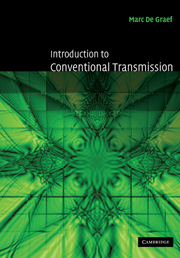Book contents
- Frontmatter
- Contents
- Preface
- Acknowledgements
- Figure reproductions
- 1 Basic crystallography
- 2 Basic quantum mechanics, Bragg's Law and other tools
- 3 The transmission electron microscope
- 4 Getting started
- 5 Dynamical electron scattering in perfect crystals
- 6 Two-beam theory in defect-free crystals
- 7 Systematic row and zone axis orientations
- 8 Defects in crystals
- 9 Electron diffraction patterns
- 10 Phase contrast microscopy
- Appendix A1 Explicit crystallographic equations
- Appendix A2 Physical constants
- Appendix A3 Space group encoding and other software
- Appendix A4 Point groups and space groups
- List of symbols
- Bibliography
- Index
8 - Defects in crystals
Published online by Cambridge University Press: 02 December 2009
- Frontmatter
- Contents
- Preface
- Acknowledgements
- Figure reproductions
- 1 Basic crystallography
- 2 Basic quantum mechanics, Bragg's Law and other tools
- 3 The transmission electron microscope
- 4 Getting started
- 5 Dynamical electron scattering in perfect crystals
- 6 Two-beam theory in defect-free crystals
- 7 Systematic row and zone axis orientations
- 8 Defects in crystals
- 9 Electron diffraction patterns
- 10 Phase contrast microscopy
- Appendix A1 Explicit crystallographic equations
- Appendix A2 Physical constants
- Appendix A3 Space group encoding and other software
- Appendix A4 Point groups and space groups
- List of symbols
- Bibliography
- Index
Summary
Introduction
In this chapter, we will continue the discussion of the dynamical theory of electron diffraction. We will cover several of the most important defects: dislocations, stacking faults, and other planar boundaries, and we will discuss the diffraction contrast caused by various types of interfaces, e.g. domain walls and twins. Finally, some aspects of the weak beam technique will be covered. In all cases, we will describe how image simulations can be carried out.
The survey of defects in this chapter is by necessity limited to only a few defects. The reader will find that the methods are sufficiently general, so that they may be applied to other defects with only minimal modifications to the experimental procedures or numerical algorithms.
Crystal defects and displacement fields
One of the most important applications of conventional TEM is the study of defects in crystalline materials. As we have seen in Chapter 1, a crystal is characterized by a periodic 3D lattice, decorated with a motif or asymmetric unit consisting of one or more atoms. From space group theory, we know that the symmetry elements of a crystal structure are either rotational, translational, or a combination of both. Since a space group is a group of infinite order, and since real crystals are always of finite size, we find that a crystal cannot completely satisfy all elements of a particular space group. In other words, space group symmetry must be broken at one or more points in space. The most obvious case of broken symmetry is found at the bounding surfaces of the crystal and we have already described the importance of this type of symmetry breaking in Sections 2.6.3 (page 119) and 5.8 (page 328).
- Type
- Chapter
- Information
- Introduction to Conventional Transmission Electron Microscopy , pp. 460 - 517Publisher: Cambridge University PressPrint publication year: 2003



